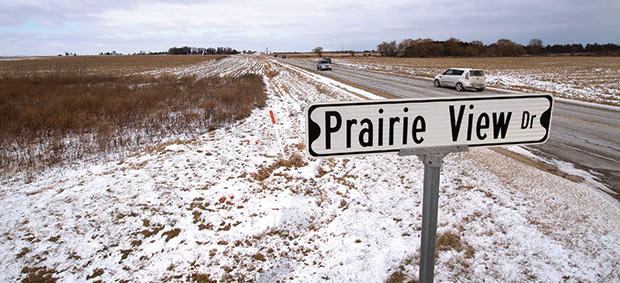Recent NLRB decisions benefit employers
By: Bridgetower Media Newswires//January 23, 2018//
By Rich Meneghello
BridgeTower Media Newswires
 Over two short days in mid-December, the National Labor Relations Board issued four historic decisions that will make a difference in workplace law for years to come.
Over two short days in mid-December, the National Labor Relations Board issued four historic decisions that will make a difference in workplace law for years to come.
Regardless of whether businesses have a union presence or not, they will be touched by these far-reaching rulings. By casting away decisions from the Obama Administration, the newly constituted NLRB — now filled with a majority of Republican appointees — brought about a return to reasonable standards governing relationships between employers and their workers.
After surviving eight years of a decidedly pro-union NLRB that routinely pumped out opinions hostile to employers, businesses can breathe a sigh of relief knowing that balance is being restored to labor and employment law. Here’s a summary of these four decisions:
Joint-employment doctrine gets rewrite
In 2015, the NLRB scrapped a 30-year-old joint-employer test by eliminating a requirement stating that businesses could not be part of a joint-employer arrangement unless they exercised direct control over employees. That decision from 2015 also said that indirect control — such as control through an intermediary — would be sufficient to constitute joint employment. This decision did not seem to comport with reality, bringing about a great deal of trouble in a business world replete with contingent workforces, franchise relationships and similar things.
But on Dec. 14, the NLRB announced that, in all future and pending cases, two or more entities will once again be deemed joint employers only if there is proof that one entity has exercised control over the essential employment terms of another entity’s employees (rather than merely reserving the right to exercise control) and has done so directly and immediately (rather than indirectly) in a manner that is not limited and routine.
This decision is welcome news for employers. It should spare businesses from unwarranted claims of unfair labor practices, preventing workers and unions from bringing such claims against companies using a broad joint-employer theory. Officials should immediately review all of their companies’ third-party relationships with counsel to ensure proper precautions are being taken to comply with this resurrected standard.
Reasonable workplace rules are acceptable again
Back in 2004, the NLRB set up a standard for analyzing handbooks and employer policies, saying they would be deemed unlawful if employees could “reasonably construe” their rules as being barriers preventing them from exercising their rights. Although this case involved a rule concerning workplace civility, the NLRB greatly expanded its reach over the past eight years. Among other things, the Obama Administration’s NLRB struck down common employer policies dealing with confidentiality, employee interactions with third parties, employees’ use of logos and trademarks, and recording and photography in the workplace.
These decisions were all cast aside with another ruling on Dec. 14. From now on, when evaluating a facially neutral rule that could be interpreted as having the potential to interfere with the exercise of National Labor Relations Act rights, the NLRB will evaluate the nature and extent of the possible effect on NLRA rights, and legitimate justifications associated with the rule. For example, the NLRB upheld a rule that a military contractor put in place to protect security by prohibiting the use of cameras on its premises.
Employers should immediately work with their lawyers to see if their handbooks and policies should be rewritten. Over the past eight years, many lawyers have advised their clients to redraft policies to adjust to the unreasonable demands laid down by the NLRB; it is time for reasonableness to reign again.
Micro-units are dead
In 2011, the NLRB overturned 20 years of precedent by ruling that unions were allowed to organize a minority share of an employer’s workforce — a “micro-unit.” This ruling permitted organized labor to establish footholds in businesses where the majority of the employees might not have wanted to be represented by a union.
But on Dec. 15, the new NLRB once again restored normalcy. It reinstated the previous standard, under which a desired bargaining unit would be examined using a “community of interest” standard. This ensured that small, piecemeal groups of employees could not be picked out to form an inappropriate union.
This is a big victory for employers — unionized and non-unionized alike — that have fought to level the playing field for labor law. As a result of this decision, employers’ ability to combat fractured units has been restored. Unions will no longer be able to establish a bargaining unit by organizing a small group of employees in an effort to infiltrate the rest of the workforce.
Company officials should work with their counsel to ensure their union-avoidance plans are adjusted to conform to this standard.
Stability restored after union contracts expire
Finally, the NLRB overturned a case from 2016 forcing unionized employers, upon the expiration of a collective-bargaining agreement, to provide to the union advanced notice and an opportunity to bargain even when it continued to carry on with typical workplace practices exactly as it had done previously. That decision concluded that taking the same action would constitute a “change” that would trigger a new set of hoops for the employer to jump through, even if the employer’s actions were permitted under the terms of a collective-bargaining agreement that was no longer in effect.
On Dec. 15, the NLRB reversed course and flatly rejected that case, finding that it contradicted Supreme Court precedent and decades of previous NLRB law. The restored standard provides a welcome return to the pre-Obama NLRB’s precedents regarding bargaining obligations following the expiration of a collective-bargaining agreement. Employers are once again permitted to take unilateral actions in these circumstances, as long as their actions are based on an established past practice. This provides clarity for employers that provide the same benefit plans to both unionized and non-unionized workforces, especially if employers regularly make changes to those benefit plans.
Rich Meneghello is a partner in the Portland, Ore., office of Fisher Phillips, a national firm dedicated to representing employers’ interests in all aspects of workplace law. Contact him at 503-205-8044 or [email protected], or follow him on Twitter — @pdxLaborLawyer.
Legal News
- State Bar leaders remain deeply divided over special purpose trust
- Former Wisconsin college chancellor fired over porn career is fighting to keep his faculty post
- Pecker says he pledged to be Trump campaign’s ‘eyes and ears’ during 2016 race
- A conservative quest to limit diversity programs gains momentum in states
- Wisconsin prison inmate pleads not guilty to killing cellmate
- Waukesha man sentenced to 30 years for Sex Trafficking
- 12-year-old shot in Milwaukee Wednesday with ‘serious injuries’
- Milwaukee man convicted of laundering proceeds of business email compromise fraud schemes
- Giuliani, Meadows among 18 indicted in Arizona fake electors case
- Some State Bar diversity participants walk away from program
- Wisconsin court issues arrest warrant ‘in error’ for Minocqua Brewing owner
- Iranian nationals charged cyber campaign targeting U.S. Companies
WLJ People
- Power 30 Personal Injury Attorneys – Russell Nicolet
- Power 30 Personal Injury Attorneys – Benjamin Nicolet
- Power 30 Personal Injury Attorneys – Dustin T. Woehl
- Power 30 Personal Injury Attorneys – Katherine Metzger
- Power 30 Personal Injury Attorneys – Joseph Ryan
- Power 30 Personal Injury Attorneys – James M. Ryan
- Power 30 Personal Injury Attorneys – Dana Wachs
- Power 30 Personal Injury Attorneys – Mark L. Thomsen
- Power 30 Personal Injury Attorneys – Matthew Lein
- Power 30 Personal Injury Attorneys – Jeffrey A. Pitman
- Power 30 Personal Injury Attorneys – William Pemberton
- Power 30 Personal Injury Attorneys – Howard S. Sicula









